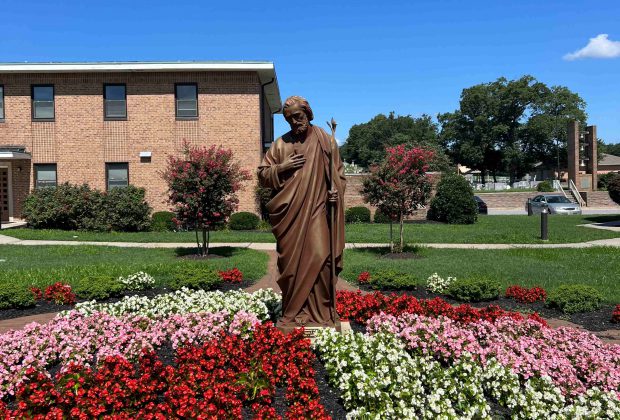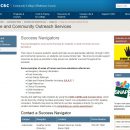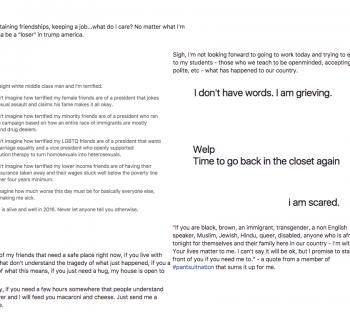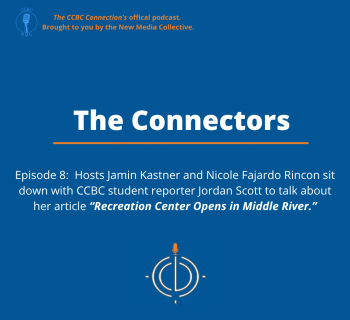The writer of this article was part of a summer honors experience called Voices From Our Backyard: Local News Narratives, during which students created and wrote stories to be published in community news outlets.
Aether Luces
“Wake up Anak (Child), we leave for church at noon.” This is your mother, shaking you out of your slumber on a warm Sunday morning.
As you get ready, your family speaks to you in Tagalog (Tuh-gaa-luhg), the main language in the Philippines, your family’s homeland, but you respond in English.
When you get to church, there are a diverse set of people, but you recognize many of them as Filipino; they are people you know.
Titas (Aunts), Titos (Uncles), Ates (Female cousins), Kuyas (Male cousins). None of them by blood but you call them with these titles as signs of respect.
You hear conversations in Tagalog all around you.
The church bell rings.
Silence.
The presiding priest, walks to the front of the church with two supporting priests, one from Nigeria and one from Spain.
The conversations stop, and for the next hour everything, the prayers and chants, and what your parents whisper, is in English.
Titas become aunts, Titos become uncles¸ ates and kuyas become cousins.
You’re not overly religious like your parents, yet you try to be, simply because the church is a part of the culture.
There are about 50,000 Filipinos living in Maryland, according to the World Population Review. And according to the 2020 Census of population and Housing in the Philippines, 78.8 percent of Filipinos identify as Roman Catholic.
The Catholic Church is an integral part of the Filipino American community in Maryland, but because many Filipinos face prejudice from outside and within the community they try to connect to the culture in different ways.
St. Joseph Church, located in Fullerton and about 10 minutes from CCBC Essex, is a large gathering place for the local Filipino community.
According to Connie Sarage, the Parish Office Manager, there are about 3,000 active members of the church, with about one-third of all of them being Filipino.
She added, “Our 12:30 Sunday mass is our Filipino Mass, with about 50 percent being Filipino.”
As a result, many Filipino community members help during the mass as volunteers, such as ushering and hospitality, she said.
St. Joseph has hosted numerous Filipino centric events, such as Simbang Gabi, a Filipino tradition where during the week leading up to Christmas, you go to church every night.
St. Joseph’s music ministry is lead by Regina Aquino, a recent UMBC Graduate who, along with her band, Crashed Chords, are also all Filipino and immigrated to the U.S. when they were young.
“The church is a big part of our community," Aquino said. "It’s a home for a lot of our community."
St. Joseph Church also hosts and works with a Filipino religious organization, Couples for Christ Youth (CFCY), who Crashed Chords are also a part of.
“From the local chapter, there are about 100 members, and about 90 to 95 percent of us are Filipino,” Ethan de Vera, a CFCY member, who is also a first-generation immigrant, said.
Nate Dalisay, the male lead vocalist of Crashed Chords said, “CFCY stands for evangelization, spreading the word of god, and its [spreading Filipino values] a side effect of it, but a very intentional one. It promotes Filipino values like hospitality and togetherness.”
Nicole Pielago, a CCBC Essex Student and leader of the St. Joseph CFCY chapter herself doesn’t even know Tagalog, and admits she isn’t as musically talented, as others.
She said, “I did feel a little bit of a disconnect when I was at a party and people would be singing karaoke or jamming out…sometimes, I do wish I could speak Tagalog.”
Some Filipinos seek to learn and appreciate the culture outside of the common church relations.
Although the church has been a home to many Filipino Americans, it is also an example of just one of the stereotypes within the community. Many exist. This can include friendly, outgoing, musically-talented, overtly religious, and going into medicine.
The last two especially are important, and often not living up to those stereotypes and expectations can lead to familial isolation.
Sophia Angela Leon Gavino, a CCBC Student, who immigrated here when they were 7, is openly queer and studying Art. Gavino said, “My family doesn’t see me as queer or gay…it gets brushed aside.”
They added, “A lot of Filipino families think nursing is the only option since before they were even born; that was engrained into Filipino history and culture.”
Aquino also describes her boyfriend’s situation and said, “My boyfriend recently dropped out of college and wants to pursue entrepreneurship…he went from nursing to doing that, and his parents are not supportive, not even a little bit.”
There is one such Filipino cultural appreciation movement that excludes the involvement of church traditions. It is the decolonization movement.
As described by Gavino, it is, “The journey we take to unlearn and heal from our colonial ways…makes us question the history and culture we grew up with and customs our oppressors had made us feel ashamed for practicing.”
According to the Asia Society, Catholicism came to the Philippines in the 1560’s by Spanish explorers, where they kicked out Islamic influence and began forceful conversion.
For Gavino, they connect to the culture through dance and pre-colonial fashion. In this effort, they also created the Filipino Mabuhay Dance Company at their high school, Perry Hall.
Still, some who are religious find various ways to connect to the culture outside of the church.
Aquino said, “I get more exposure to it (the culture) through music and as well as in college being part of the Filipino American Student Association."
America is a land of immigrants, with so many diverse groups moving here many seek to find some familiarity and feel at home in an unfamiliar place.
At its heart, with the church or not, the Filipino American community here in Maryland seeks to connect with their culture.
As de Vera said, “The culture wants to connect with me, it embraces new people…an extension of love…it feels like one big happy family.”















great article